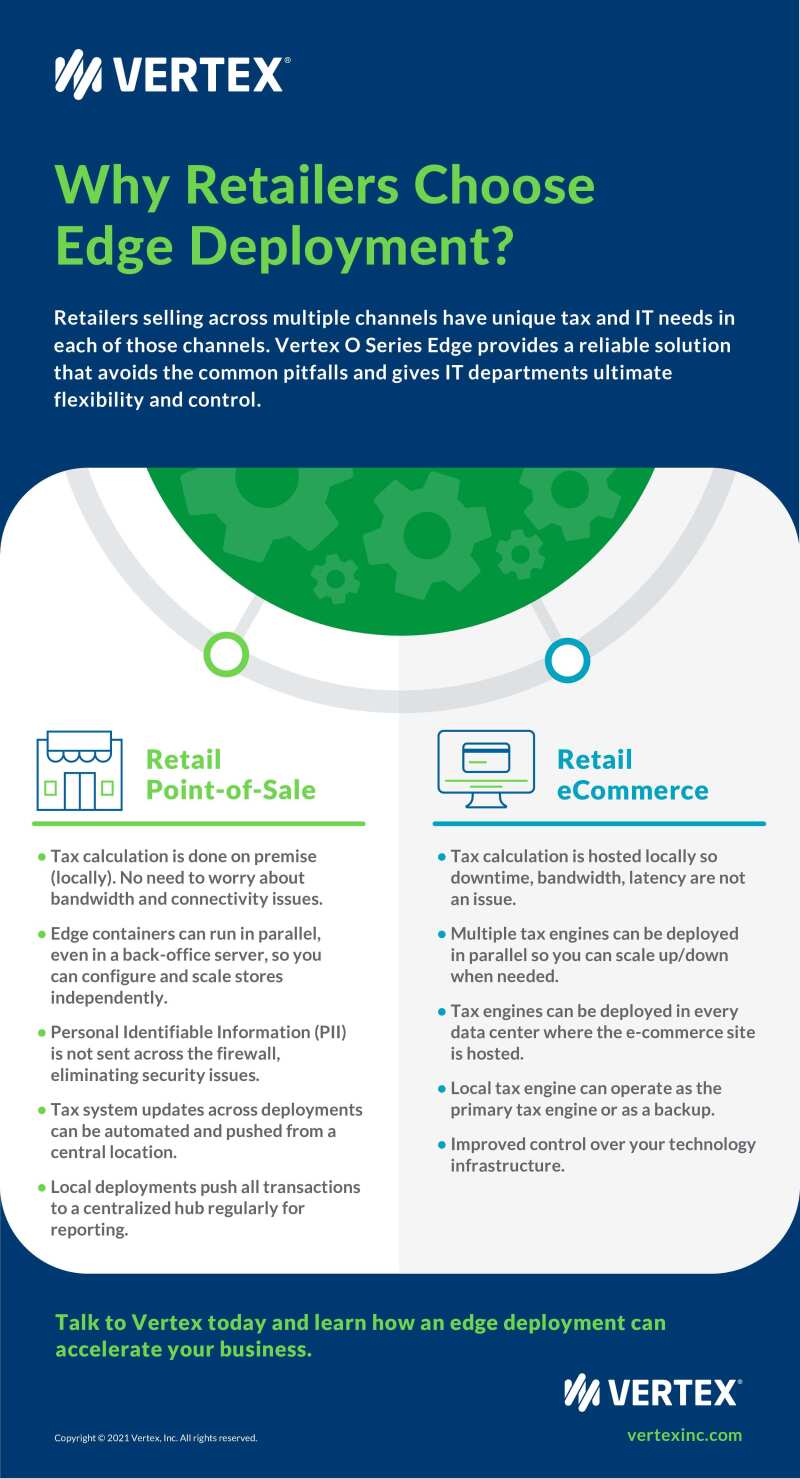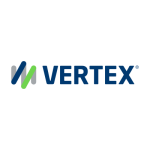Edge computing may not be top of tax professionals’ technology wish-list for a solution to help improve VAT automation. Yet for ‘bricks and clicks’ retailers that operate both online and in physical stores, it can make the difference between a sales transaction taking place or not.
Many people will use edge computing every day and not even realise it. If you wear a smart watch while exercising, it is edge computing that is capturing your performance statistics. The app sends this data to a centralised server so that reports and statistics can be analysed later.
There are countless applications of edge computing in industrial environments too, such as predictive maintenance in healthcare, autonomous vehicles, and remote monitoring of hard-to-reach assets in the field such as electricity pylons.
Edge computing enables organisations to move a process near to where the calculation is needed. This could be on a user’s computer, on an Internet of Things (IoT) device, or on an edge server. Crucially, it means there is no need to rely on hosting the data in a remote data centre like the Cloud.
In this age, edge computing has an essential role to play in tax automation. When used with a tax engine, it provides an end-to-end solution that helps retailers to remain compliant with rapidly changing global tax regulations. It can also automate VAT calculations at the ‘edge’ of wherever and whenever a customer transaction needs to be processed.
Sales cart abandonment
Today’s consumer expects a seamless shopping experience, no matter how or when they make a purchase. As the retail sector continues to evolve, brands are re-evaluating their omnichannel strategies to offer this frictionless shopping experience across their physical and digital trading channels.
Many retailers are investing heavily in innovative ways to entice shoppers to browse an online marketplace or visit a physical store. However, they should also be focusing on the resilience and performance of the applications that support the e-commerce and point-of-sale (POS) function. Back-office complexities that can cause a delay at the checkout (both online and in-store) can prevent customers from taking the final step and making a purchase.
Sales cart abandonment remains a big challenge for e-commerce businesses, with statistics from Econsultancy suggesting that global abandonment rates have reached over 76%. Delivery costs or a complex registration process can put shoppers off from making a transaction at the last minute, but slow back-office tax calculations at the point-of-sale can also frustrate customers. These can be caused by web traffic delays or unreliable internet connections.
Consumers are quick to take their business elsewhere if they feel the buying process is taking too long. Peak web traffic days such as ‘Black Friday’ can also overwhelm a retailer’s finance or enterprise resource planning (ERP) system, causing unwelcome hold-ups to the transaction stage and causing impatient customers to rethink their purchasing decisions.
An evolving retail environment
For bricks-and-mortar retailers, calculating tax at the cash desk used to be a straightforward process as the transaction was taking place in front of them. However, today’s omnichannel retail experience enables shoppers to buy in different ways.
Customers can order online and get their items delivered to store, or buy in store and ship to home and then return the item to a store. All of these processes have an impact on VAT, and retailers with either manual or basic tax automation solutions may struggle to keep up.
Retailers need a reliable solution to help them manage the VAT complexities that come with the omnichannel shopping experience. Some may already use a tax engine to automate VAT calculation, but that still requires a callout to a remote server hosted in a data centre to work effectively. If there are outages or connectivity issues, the process can slow or stop completely.
Eliminating friction from the purchasing process is crucial in both physical and digital retail settings, and addressing VAT automation complexities will help to remove at least one of the hurdles that could cause a customer to abandon their cart or become frustrated at the sales desk.
Another challenge for ambitious e-commerce businesses is keeping pace with tax requirements when selling in new territories. To grow their brands and offer customers new routes to market, retailers need to be ready to transact wherever customers choose to engage with them, or they put themselves at risk of tax non-compliance.
However, VAT automation need not be an inhibitor to global sales success for omnichannel retailers. Edge computing in combination with a tax engine not only enables more accurate and compliant indirect tax calculation; it does so locally, in-store or in an e-commerce data centre, anywhere and at any time.
Tax automation at the edge: using container images
The advantage of using edge computing is that it allows for tax system container images to be deployed. These are unchangeable, static files that include everything needed to run the tax engine software as an isolated process, and to improve the scalability and reliability of critical applications.
The container can be placed on a Windows or Linux machine, and everything it needs to perform the calculation (including the operating system) is in one place. Each container image is customised to a specific location’s need (for example, only the tax content required for that location is included).
‘Containerising’ the calculation component allows users to place it virtually wherever they want. Tax calculations are then performed in real time on the premises, at the point of transaction or in a local data centre.
Any transactions are then sent to a central hub where reporting, analytics, compliance, and maintenance can take place. And as data does not leave the firewall, these containers can also be deployed in countries that mandate that data remains within their borders.
Containers also enable increased scalability and resilience. Edge functionality enables retailers to apply multiple instances of the same tax engine to spread the load during peak shopping periods. A business could decide to deploy three separate servers, and then increase and decrease the number of servers as demand fluctuates. If a problem occurs with one of the servers, traffic is directed to a live system instead.
The benefits for ‘point of sale’ and e-commerce environments
For e-commerce businesses with a need for a highly scalable, low latency tax solution and in-store retailers that require a high-availability checkout solution, an end-to-end solution incorporating edge computing and a tax engine provides the answer.
The VAT calculation point needs to support accuracy and speed, and edge computing enables this critical processing at the point of transaction. This ensures that tax automation does not delay the transaction and that any data and information can be held at a central point for reporting purposes.
Providing retailers with consistent tax calculations across multiple channels, point of sale (POS) and e-commerce environments can use the same edge-enabled tax engine to automate the process.
Deploying an end-to-end solution incorporating edge computing and a tax engine eliminates network connectivity and bandwidth issues in local store settings. If a calculation must cross the internet and then come back, it poses a risk: potentially a failed transaction or slow performance. Increasing reliability by eliminating potential points of failure, tax automation at the edge removes network latency issues, thereby helping e-commerce sites keep up with demand during busy spells.
Security is also improved as any personally identifiable information (PII) in a transaction does not leave an organisation’s firewall.

Accessing fast, scalable, secure, and accurate tax determination while improving performance will help retailers keep pace with consumers’ increasing expectations for speed and choice. Sales transactions equal revenue, so it is essential that retailers don’t let tax automation issues be the reason a customer abandons a purchase or becomes frustrated with the brand and doesn’t return.
Investing in back-office resilience and performance can help retailers provide their customers with the frictionless commerce experience that prevents buyer frustration and losing a potential purchase.












